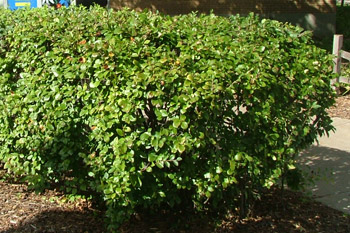If your plants have been sheared down to the ground without branches six to eight inches long, the plants may not survive the winter. In they have canes of that length, the plant should survive if the temperatures do not drop below -38 F. The Peking Cotoneaster can be successfully pruned. The best time to prune the outer branch tips to shape and reduce the size of the plant is in the early spring before new growth emerges. Renewal pruning is needed as the plant matures. This is done in early spring by removing the largest, heaviest canes to the ground. Up to five branches can be removed each year depending on the size of the plant. Light is important to the Cotoneaster and you may have to ‘pick prune’, cutting out small holes in the surface of the hedge to permit light to reach the interior and promote budding within the plant. However, this is a moderate growth rate plant with a long life span. It will grow to a height of 6′ to 7′ at maturity, which could be as long as 20 years. It grows slowly at first, but after a few years develops at about 12 to 18 inches per year. Hence, the aesthetics of your plants for the first few years may not be satisfying, but, if you have the patience and the plants are receiving full sun, these plants may return. If you do not see any new growth on the plants, you can replant with new root stock once the soil is warm and use a product like Miracle Grow to foster their hardiness. This plant is native to Mongolia, northern and western China, and the Himalayas. It was introduced in the US in the early 1880s.
